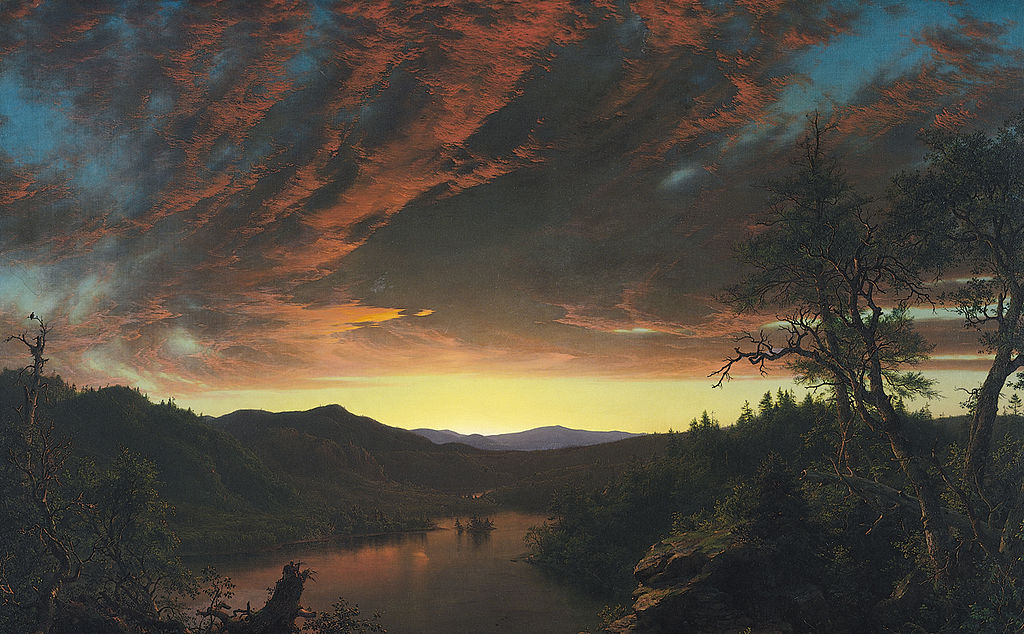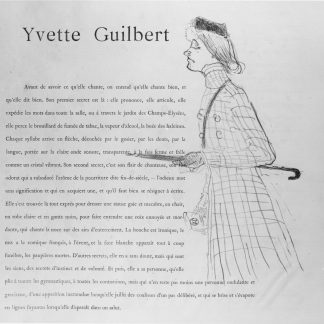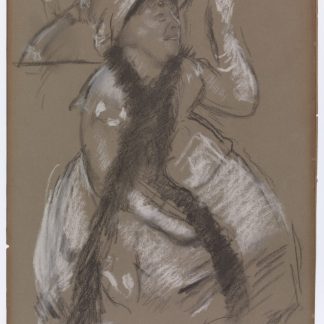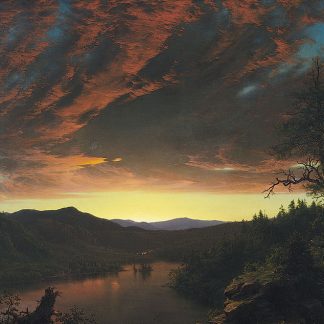Description
Painted during a time of increasing American interest in unspoiled nature—Thoreau’s Walden was published in 1854—there are no signs of human activity in this landscape; the only animal life is a small bird perched at left. Like many of Church’s paintings, the picture is likely a composite of sketches taken in the field, especially in Maine, which he visited often. He travelled many times in the 1850s to Mount Desert Island and Mount Katahdin, then an especially remote area.
Like Church’s other major works, it is a highly detailed view of nature. The sky is painted in skillful gradations of purples, oranges, and yellows, and reflects the influence of the popular English landscapist J. M. W. Turner on Church. Improved oil colors may have helped Church achieve the effect.
In terms of the Luminist style, with which Church is sometimes associated, the artistic achievement in the painted sky is the culmination of his many earlier pictures of sunsets and sunrises. David C. Huntington, Church’s “re-discoverer” in the 1960s, writes that “there is no [longer a] surfeit of pigment; no unnatural border inadvertently solidifies the cloud vapors … In Twilight in the Wilderness the discipline of careful study achieved its consummation.”] The lack of imposing “paintiness” contributes to the effect of a camera-like clarity that leaves the personality of the painter scarcely discernible, as one contemporary reviewer noted:
He has attained the distinction—that rarest distinction—of being a painter without a manner, almost without a style. His pictures are not tinged with his own personality. He paints, not nature according to Mr. Church, but simply nature. His eye, like every other man’s, is a camera with a brain behind it; but his brain gives him the power to transfer to canvas the vanishing forms and tints and shadows thrown upon his eye, unaffected by the medium through which they have passed, except by selection, combination, and unification.[6]
Whether this approach to painting, an aspect of Luminism, was commendable depends on the critic. The quoted review ends, “It is this absence of any signs of mood or manner in his works that we attribute the charm of a deficiency in feeling which is sometimes brought against him.” Huntington responds, “The dissemblance of art has so enthralled the critic that the mood, the feeling of Twilight in the Wilderness elude his recognition.”[7]
Bibliography
Twilight in the Wilderness, https://en.wikipedia.org/w/index.php?title=Twilight_in_the_Wilderness&oldid=1071399257 (last visited Aug. 11, 2022).






